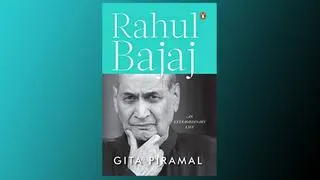A moment for leadership, the way we know it now, to pivot to a new way of leading organisations, that’s what the book Coaching — The Secret Code to Uncommon Leadership , by Ruchira Chaudhary, highlights. It builds a very strong case for adopting and integrating coaching as a way of leading employee engagement and development; after all, organisations are people and people connect, engage and drive outcomes.
While organisations focus on increasing productivity, results and performance we may overlook that these are driven by people and how they work in synergy. For this to happen conversations are important, those that build relationships and offer support, as appropriate to the challenge. A strong call to leaders to move from a command-and-control approach to lead by curious inquiry, leveraging people’s potential, pull towards a task rather than push, as an effective way to navigate the crisis in leadership now.
“As leaders we must be humans before managers.” This is the premise for Uncommon Leadership . Good managers may not necessarily be equipped with the skills to coach; hence a conscious building of capacity may be called for to have those unbiased, connected conversations. That is the secret code — a way of enabling this.
Building others
A shift from a rewards system based on performance to rewards for building others is a strong recommendation of the book. “When you coach you transform an individual’s ability into a capability in several different ways.” This is a strong and valuable message for organisations. Clearly, this draws from extensive research and experience of the author herself in coaching leaders.
Extensively quoted throughout the book is the TedTalk by Margaret Heffernan on power of team vis-a-vis individual star performers. Examples are drawn from contributions of various authors, books, thought leaders and from scenarios at work place to substantiate the compelling need to develop a coaching mindset.
The book highlights explicitly what happens when coaches get to work, with the 4C+ Model where Capability, Clarity, Confidence and Consciousness emerges as a result of having a coach to support leaders and managers who are navigating the VUCA (Volatility, Uncertainty, Complexity and Ambiguity) world and its myriad challenges.
Not accounting for the influence of culture becomes a missing link in effectively leveraging coaching, hence the need to consciously build a culture in a way that it supports the Uncommon Leadership. A culture of trust where leaders are givers first before being takers and where the belief in potential of the people is paramount, works as a good context to build capability and confidence.
Culture matters
Interestingly, how we coach and build coaching capacity varies from one country to another as determined by the culture of the country too. Often times, initiating a coaching programme does not guarantee its effectiveness if the culture is disregarded.
To look beyond individual employees or teams even, in order to build an organisation-wide coaching mindset and capacity, the author explicitly offers a framework to integrate it into organisational architecture, culture and routines (C+ ARC), which is interesting as it encourages organisations to look at coaching not as a one-off intervention but a natural way of functioning.
Experienced coaches will find this perspective extremely valuable as it can be scaled and integrated into the fabric of the organisation
The construct of a coaching process, the critical competencies essential for a coach and the varied forms of coaching from a formalised engagement to leveraging moments of a meeting as an opportunistic coaching moment, manufactured moments to coach, to playing at a level field by participating in the task, it offers varied flexible modalities for adopting a coaching stance. This is a fresh approach to the question of how it can be integrated to serve the organisation.
Preparing the leader to take on this mantle, equipping them with required coaching skills is the key to make it an organisation wide way of doing business. The book highlights multiple modalities; however it could be overzealous in offering ways to coach that may infringe the boundaries of coaching, stepping into teaching and mentoring, even as distinctions are stated.
The dynamics of how women leaders have unique challenges and a good showcasing of countries led by women leaders, such as Norway, Finland, New Zealand, offer lessons of decisive proactive action, creating connections with the audience. It makes for a good case for re-examining traditional leadership styles; however this feels like a force fit into an otherwise easy narrative style of the author. The book offers innumerable real-time examples, occasionally teetering on too much of a good thing, where it may appear as a mere collation of ideas as quoted.
We are witnessing disruption and change as never before as the pandemic has showcased and this calls for a good understanding of the change process itself — the change curve and each stage — denial, support, direction and acceptance — throws up its own unique problems to solve. Navigating each stage can be an important change management skill that a coach can offer.
Inspiring examples of leaders who enabled their workforce, leveraging the uncommon leadership style, like Jaideep Khanna from Barclays, Sandeep Naik of General Atlantic, Indra Nooyi, Phil Jackson, NBA Coach, to lead empowered winning teams during a crisis are case in point.
Scenarios of career transition, organisational changes, leaders feeling ‘stuck’, C Suites who often don’t receive unbiased feedback can benefit from internal and external coaches, just as few scenarios arise when organisations do not need coaches. This is a useful distinction to make while introducing coaching in organisations.
The author has offered a very rounded view of coaching for novices and new perspectives for those familiar to integrate it into organisations. Truly a call to action to crack the code towards an Uncommon Leadership and we hope that this would become more common, as employees embrace this way of engagement and as a consequence increase organisation performance.
The reviewer is an ICF-certified Master Coach in leadership and mentoring







Comments
Comments have to be in English, and in full sentences. They cannot be abusive or personal. Please abide by our community guidelines for posting your comments.
We have migrated to a new commenting platform. If you are already a registered user of TheHindu Businessline and logged in, you may continue to engage with our articles. If you do not have an account please register and login to post comments. Users can access their older comments by logging into their accounts on Vuukle.